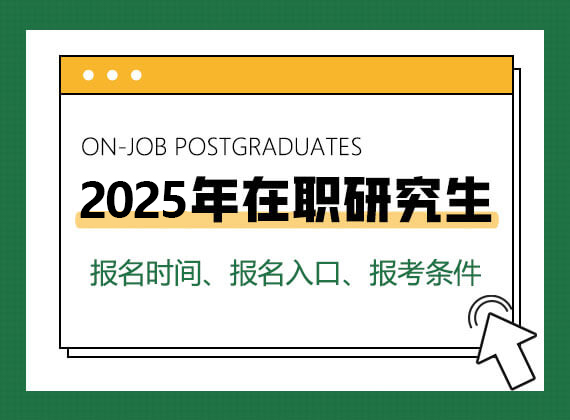2014年同等学力申硕英语模拟题(三)
来源:在职研究生招生信息网 发布时间:2013-11-19 10:48:57
Passage three
One of the simple pleasures of a lazy summer day is to be able to enjoy a refreshing slice of watermelon either at the beach, at a picnic, or fresh from the farmer’s market. Delicious and nutritious, watermelon is one of those guilt-free foods we can all enjoy: one cup of watermelon packs only about 50 calories! Watermelons are not only cooling treats for when the mercury starts to rise; they are also loaded with healthy nutrients such as vitamin A, vitamin C, lycopene (番茄红素), and etc. Vitamins A and C and lycopene are antioxidants, which are substances that work to help get rid of the harmful effects of substances.
Research has suggested that a diet high in fruits and vegetables that have plenty of antioxidants can reduce the risk of heart disease, some cancers, and some other dangerous diseases. A cup of watermelon provides 25﹪ of the recommended daily value of vitamin C and 6﹪ of the recommended daily value of vitamin A. Additionally, researchers have found that lycopene, a nutrient most traditionally associated with tomatoes, is found in equal or greater quantities in watermelon.
Watermelons also provide significant amounts of vitamin B6 and vitamin B1, both of which are necessary for energy production. In combination with the minerals and vitamins already described, these B vitamins add to the high nutrient richness of watermelon. Due to its high water content(watermelon is 92﹪ water by weight) and low calorie count, watermelon is a good choice to satisfy your hunger while you try to eat a healthy diet. Think of them as nature’s answer to the heavily marketed “vitamin water” craze.
Beside the textured, watery flesh of the fruit, watermelon seeds are also widely eaten as a snack. They are rich in iron and protein and are often pressed for oil or roasted and seasoned.
So if you are planning on dining outdoor this summer, or simply looking for a quick and convenient refreshment to serve to unexpected or reckless children, reach for watermelon. The kids will enjoy its crisp taste and messy juices, the adults will enjoy its refreshing flavors, and everyone will benefit from its nutritious value.
43. We don’t feel guilt even if we eat more watermelon because .
A. it is delicious B. it is nutritious
C. it contains low calories D. it contains antioxidants
44. The phrase “when the mercury starts to rise” (Para.1) probably means “ ”.
A. in summer evenings B. on sunny days
C. when people are thirsty D. when it is getting hot
45. How many cups of watermelon can satisfy the daily need for vitamin C?
A. 1 B. 2 C. 3 D. 4
46. By saying “Think of them as nature’s answer to the heavily marketed” vitamin water “craze”, the author means .
A. watermelon can take the place of vitamins
B. with watermelon, people don’t have to buy vitamin water
C. natural foods are much better than the manufactured ones
D. the vitamin water has been over-advertised
47. Watermelon seeds are often .
A. fried in oil B. stored for seasons
C. prepared with spice D. pressed before being cooked
48. The best title of the passage is .
A. Watermelon-the Most Enjoyable Refreshment
B. The Wonders of Watermelon
C. The Nutrients in Watermelon
D. Watermelon-the Best Summer Food for Children
Passage Four
Initial voyages into space introduced questions scientists had never before considered. Could an astronaut swallow food in zero gravity? To keep things simple, astronauts on the Project Mercury ate foods squeezed out of tubes. It was like serving them baby food in a toothpaste container.
But these early tube meals were flavorless, and astronauts dropped too many pounds. “We know that astronauts have lost weight in every American and Russian manned flight,” wrote NASA scientists Malcolm Smith in 1969. “We don’t know why.” Feeding people in space was not as easy as it looked.
Floating around in space isn’t as relaxing as it might sound. Astronauts expend a lot of energy and endure extreme stresses on their bodies. Their dietary requirements are therefore different from those of their gravity-bound counterparts on Earth. For example, they need extra calcium to compensate for bone loss. “A low-salt diet helps slow the process, but there are no refrigerators in space, and salt is often used to help preserve foods,” says Vickie Kloeris of NASA. “We have to be very careful of that.”
By the Apollo missions, NASA had developed a nutritionally balanced menu with a wide variety of options. Of course, all the items were freeze-dried or heat-treated to kill bacteria, and they didn’t look like regular food.
Today, the most elaborate outer-space meals are consumed in the International Space Station (ISS), where astronauts enjoy everything from steak to chocolate cake. The ISS is a joint venture between the U.S. and Russia, and diplomatic guidelines dictate the percentage of food an astronaut must eat from each country. NASA’s food laboratory has 185 different menu items, Russia offers around 100, and when Japan sent up its first crew member in 2008, about 30 dishes came with him. Due to dietary restrictions and storage issues, astronauts still can’t eat with whatever they want whenever they feel like it.
In 2008, NASA astronaut and ISS crew member Sandra Magnus became the first person to try to cook a meal in space. It took her over an hour to cook onions and garlic in the space station’s food warmer, but she managed to create a truly delicious dish: grilled tuna(金枪鱼) in a lemon-garlic sauce-eaten from a bag, of course.
49. Which of the following is true about the early space meals?
A. They had to be eaten from a bag.
B. They tasted better than they looked.
C. They could not make eating as easy as possible.
D. They were not nutritious enough for astronauts.
50. It seems that astronauts’ weight loss .
A. was an unusual problem among astronauts
B. was what puzzled the early scientists
C. caused new problems in space flights
D. drew the attention of the general public
51. According to Vickie Kloeris, serving a low-salt diet in space .
A. is easier said than done B. is not absolutely necessary
C. has worked as expected D. will be the future trend
52. In the International Space Station, .
A. there is enough space to store enough foods for astronauts
C. astronauts in general prefer foods from their own countries
D. astronauts’ need to eat their favorite foods can’t always be met
53. It can be learned that Sandra Magnus’ cooking in space .
A. left much to be desired B. wasn’t worth the effort
C. was quite satisfactory D. has inspired the others
54. The passage mainly introduces .
A. the variety of food options in space
B. the dietary need of astronauts in space
C. the problems of living in the space station
D. the improvement of food offered in space
上一篇: 2014年同等学力申硕英语模拟题(四)
下一篇: 2014年同等学力申硕英语模拟题(二)





















